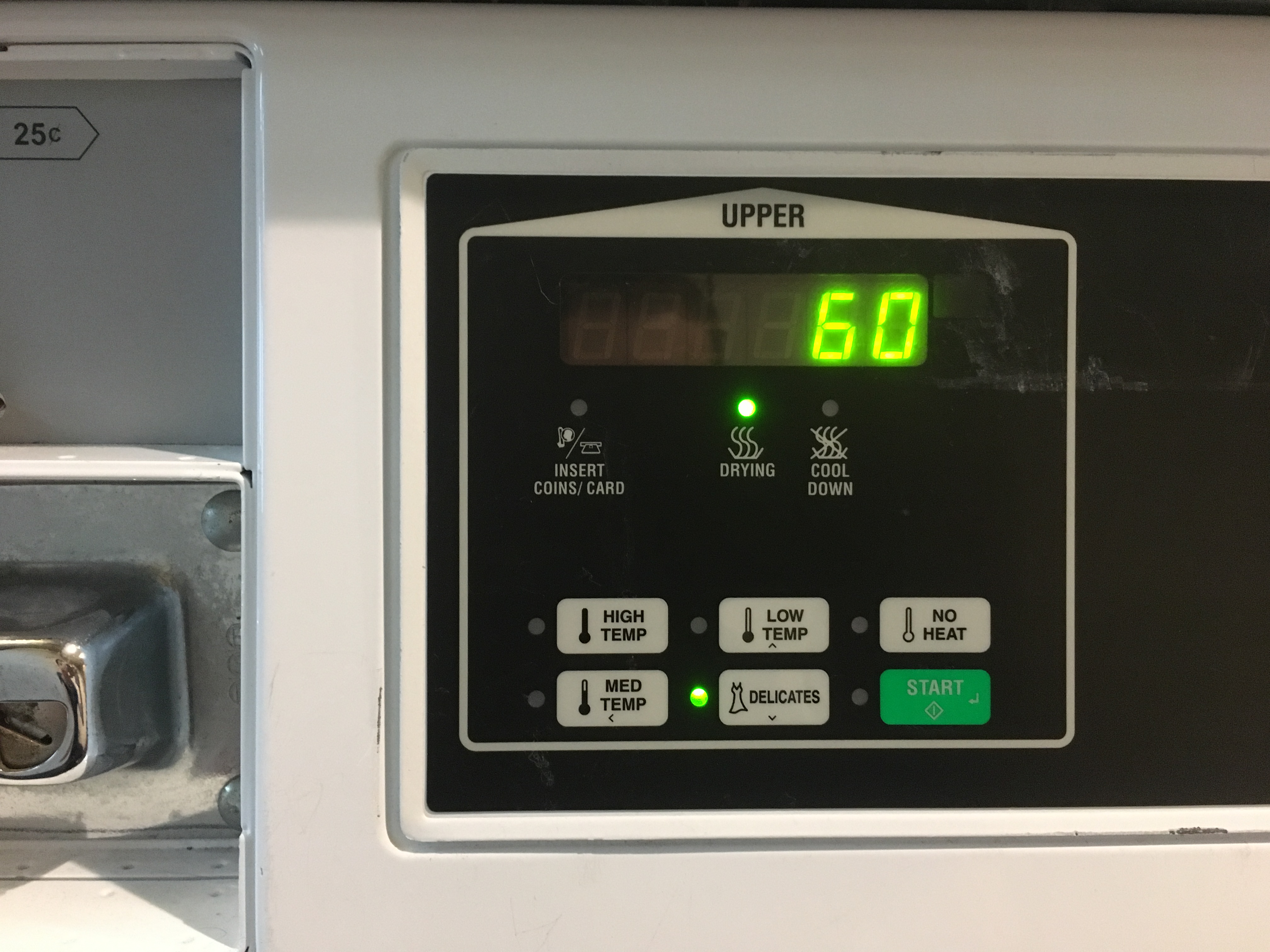Introduction
The first laundromat was opened in 1934 in Forth Worth, Texas, and was the predecessor of the $3.4 billion industry today. With the invention of coin-operated laundry machines in 1957, the modern style of laundromat machines were made available to the public, and the same basic design is still employed today.The same technology utilized in laundromats around the world are also found in many residential places such as dormitories or apartments, where the lack of personal laundry rooms in many situations leads to the development of communal laundry areas instead.
With technological advances occuring in virutally every industry in modern times, laundry machines have modernized to a certain degree as well, mainly in an attempt to better satisfy consumer preferences in an increasingly cashless world. Laundromats and communal laundry areas around the country have begun to retrofit old coin-operated machines with "smart card" technology, with many claims of this technological advancement being the most advanced system of its time, and representative of significant improvement over more traditional systems.
User Experience -- Drying
Washing
Drying
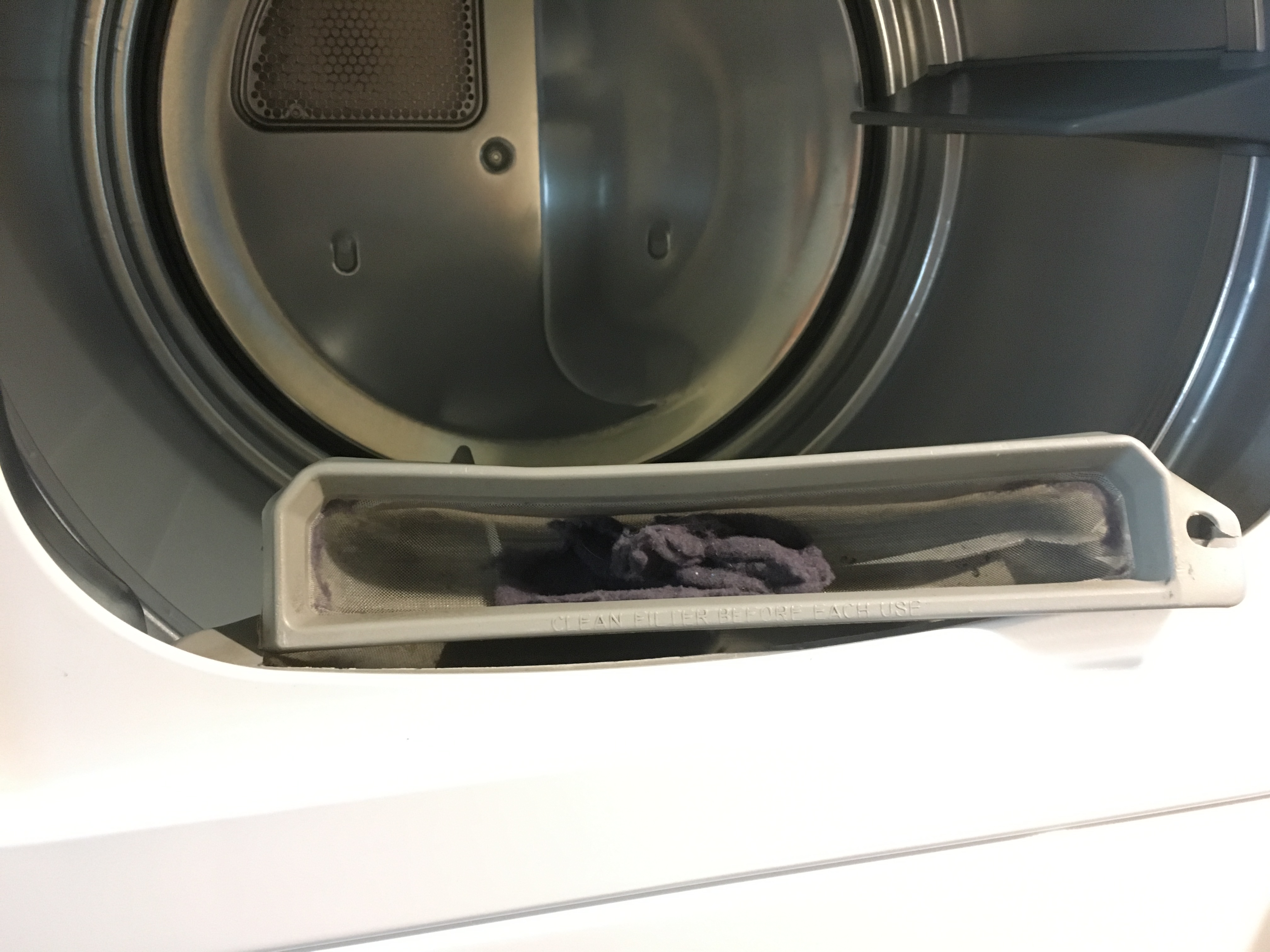
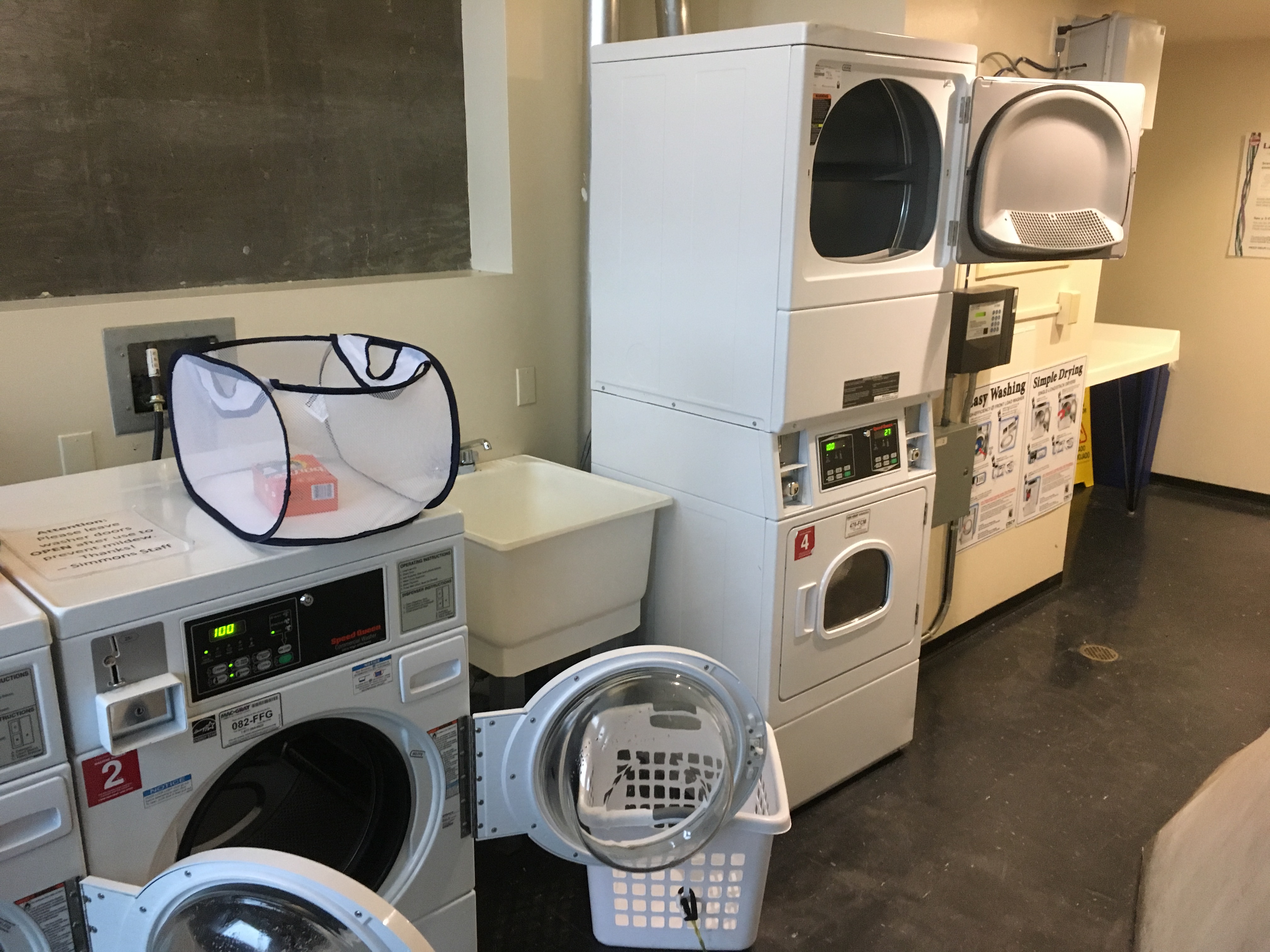
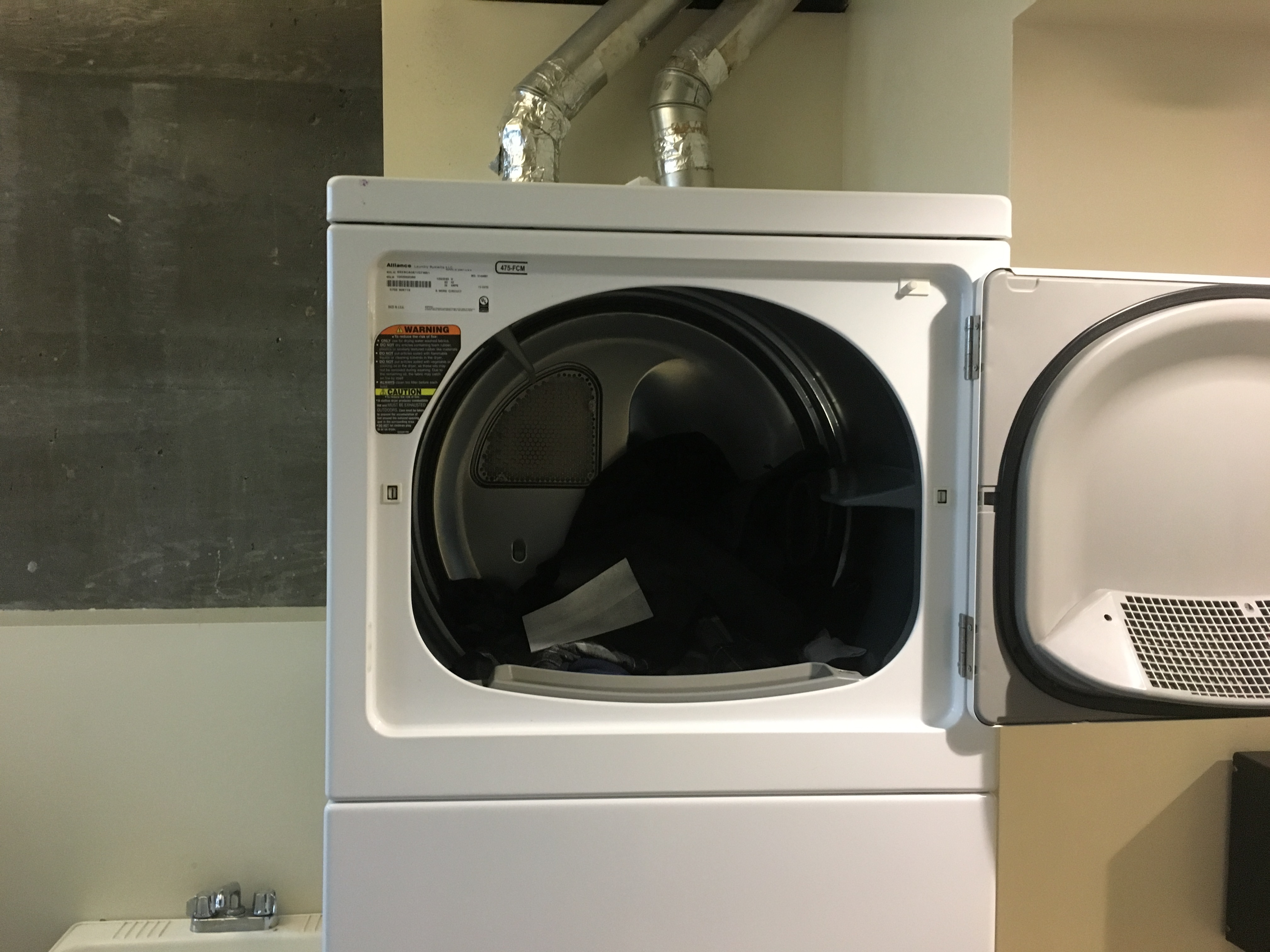

The first and possibly most crucial step is to enter the lint from the filter if the previous person was so kind enough to leave it to you. This is to ensure maximum drying potential!
Next is one of the most physically demanding tasks of the chore, requiring the transfer of the wet clothes from the washer on the bottom left, to the dryer on the upper right.
Now with all the clothes carefully put into the dryer, and the wonderfully scented dryer sheet added as well, the process of paying for the laundry begins.
As with the washing machine, there is of course an option to pay for the laundry with coins, but again, today card payment will be used.


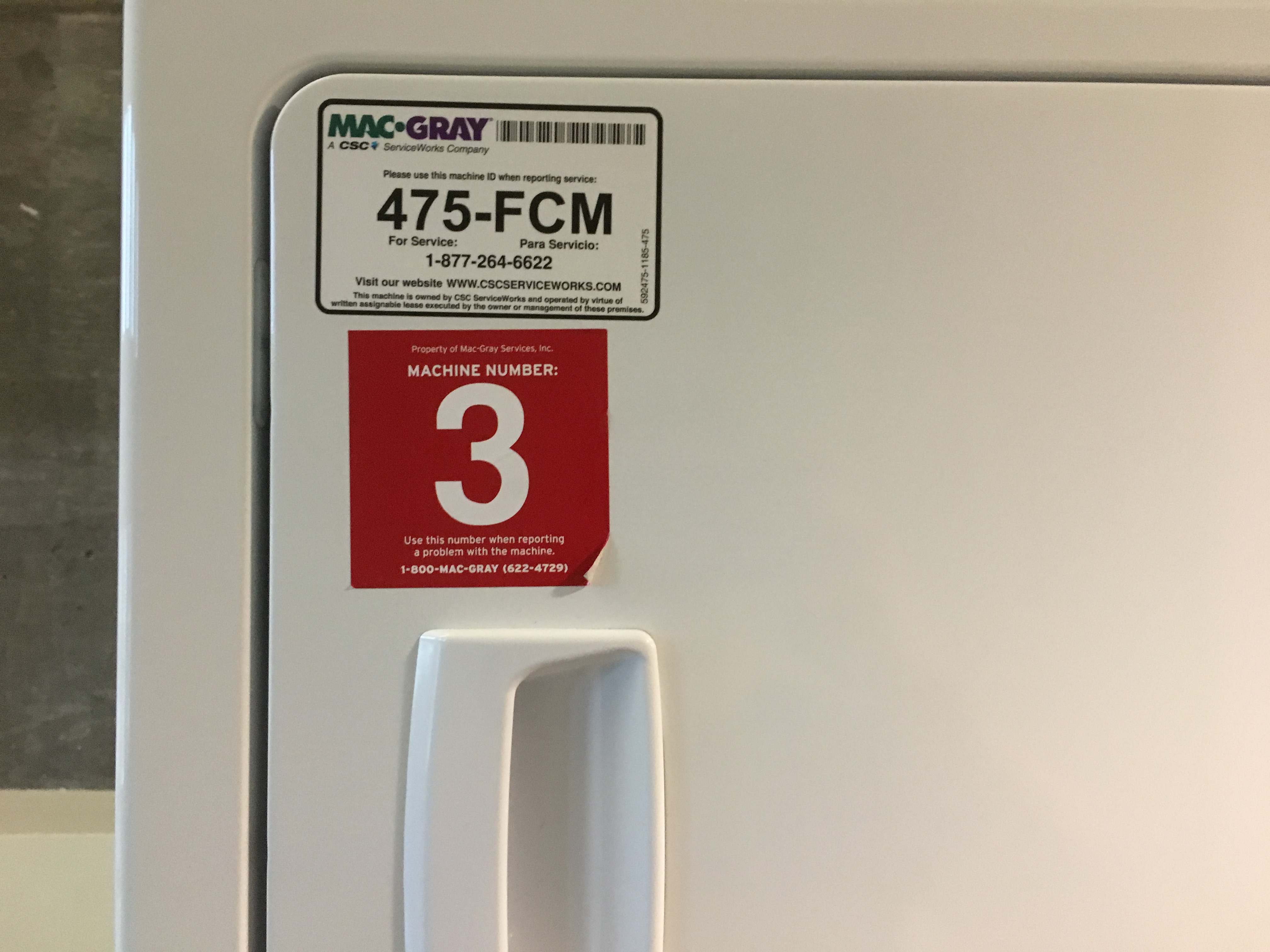
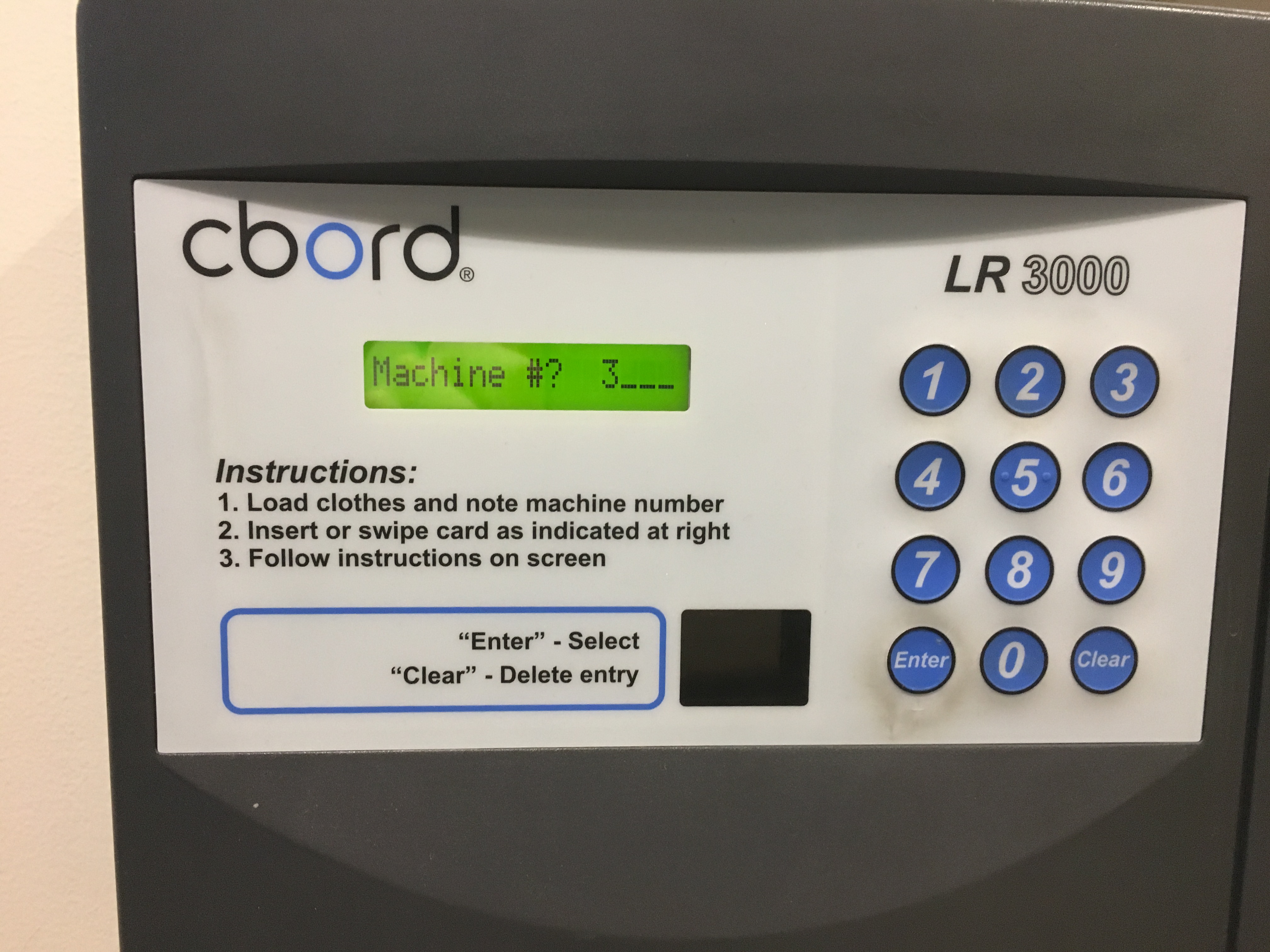
Like before, the first step is to initiate the payment process by swiping your card.
The machine number is now asked for again, which you inevitably forgot to check before hand again.
The number is displayed in nearly the same position as before on the washer, and it is easy to figure out which dryer corresponds with what number.
With the dryer number now entered, we can continue the payment process.


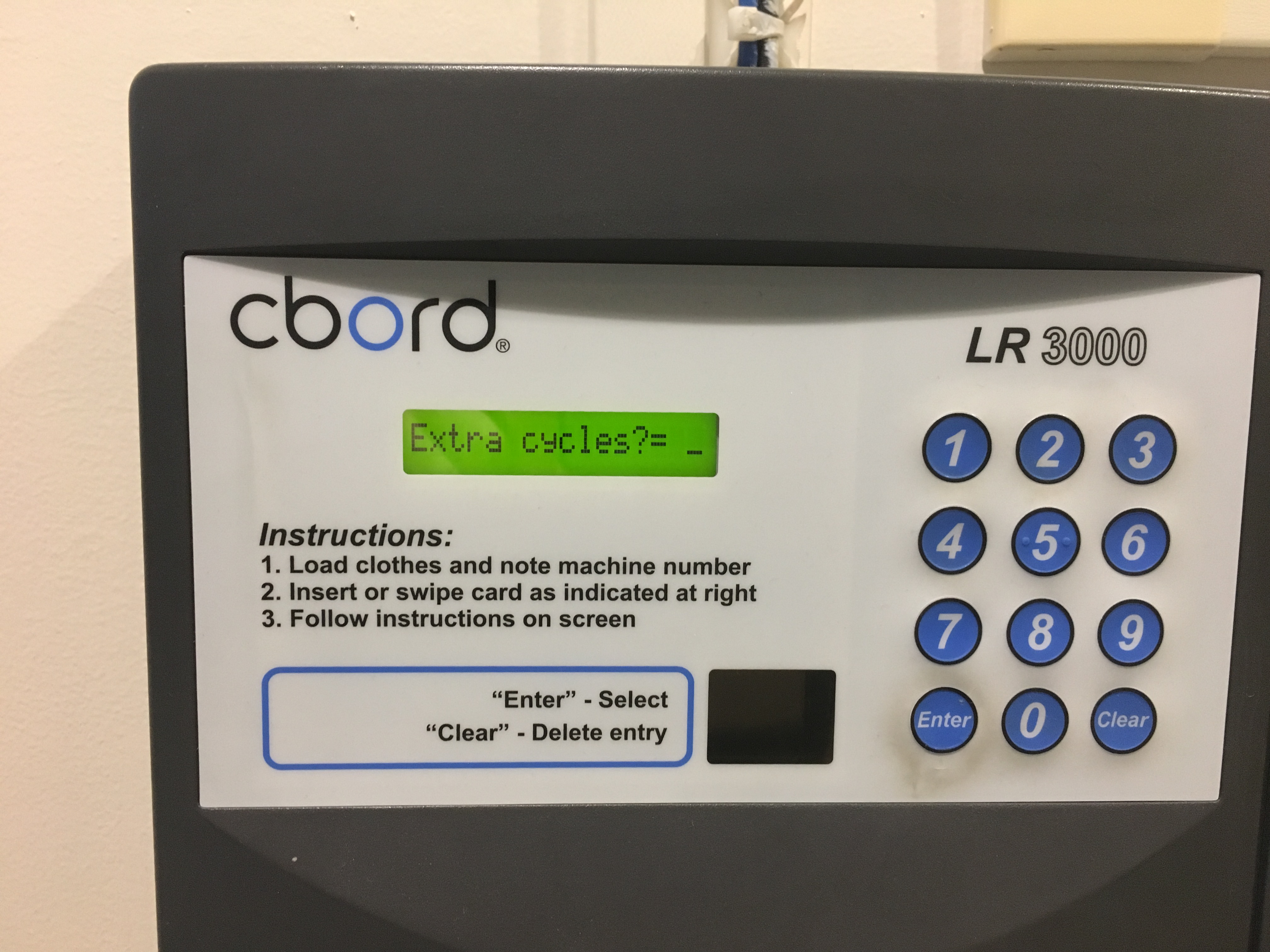
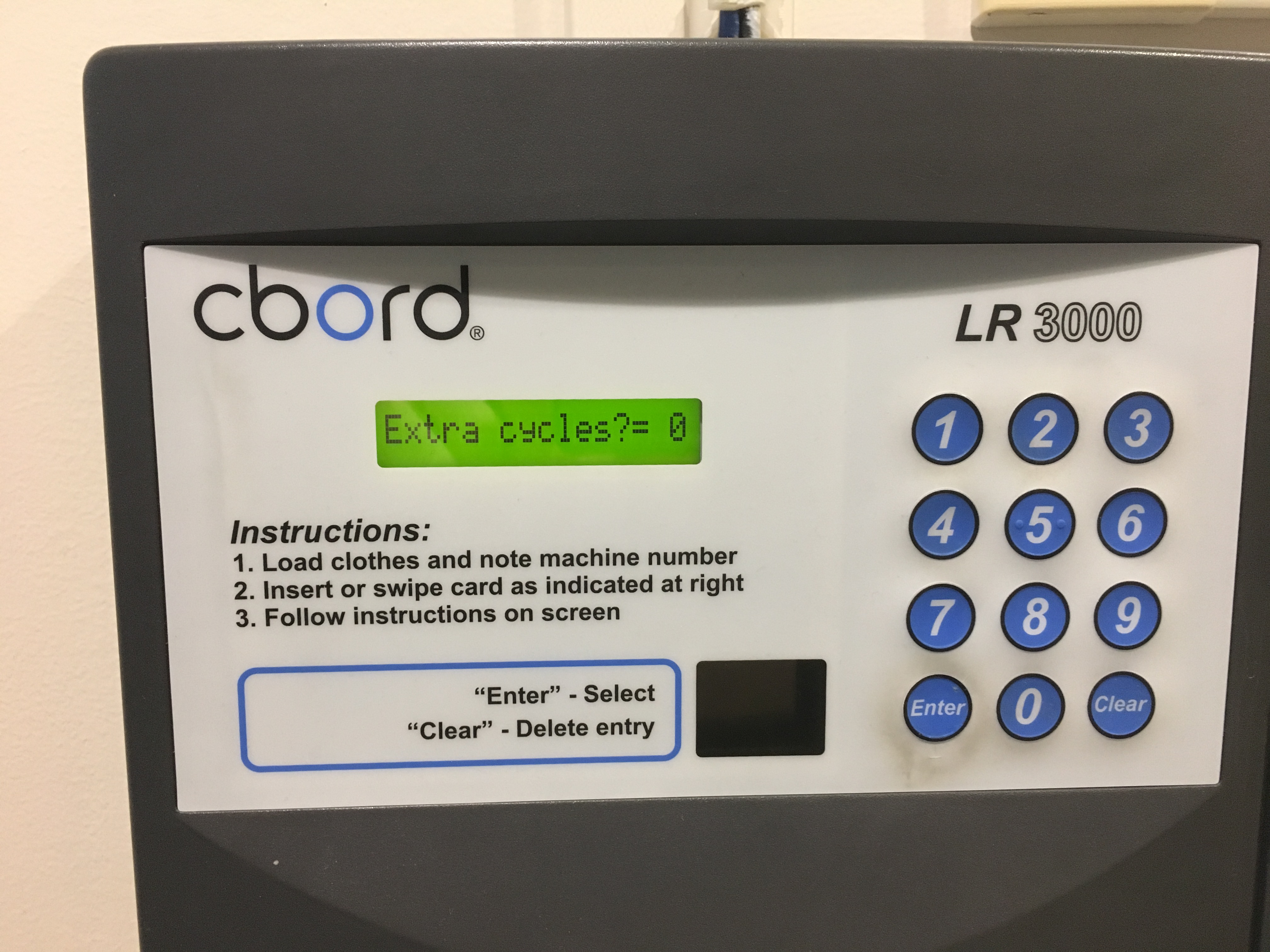
Again, confirmation of the dryer number is displayed before continuing to the next step.
Now there is a slight deviation from the washer prompts, where additional cycles can be added for a reduced cost.
To receive additional cycles, you can punch in the number here. A normal cycle is 60 minutes, and the dryers seem to max out at 99 minutes, so anything past one additional cycle is a little excessive.
Today, I have a light load, so only the orginal 60 minutes of drying time is needed.
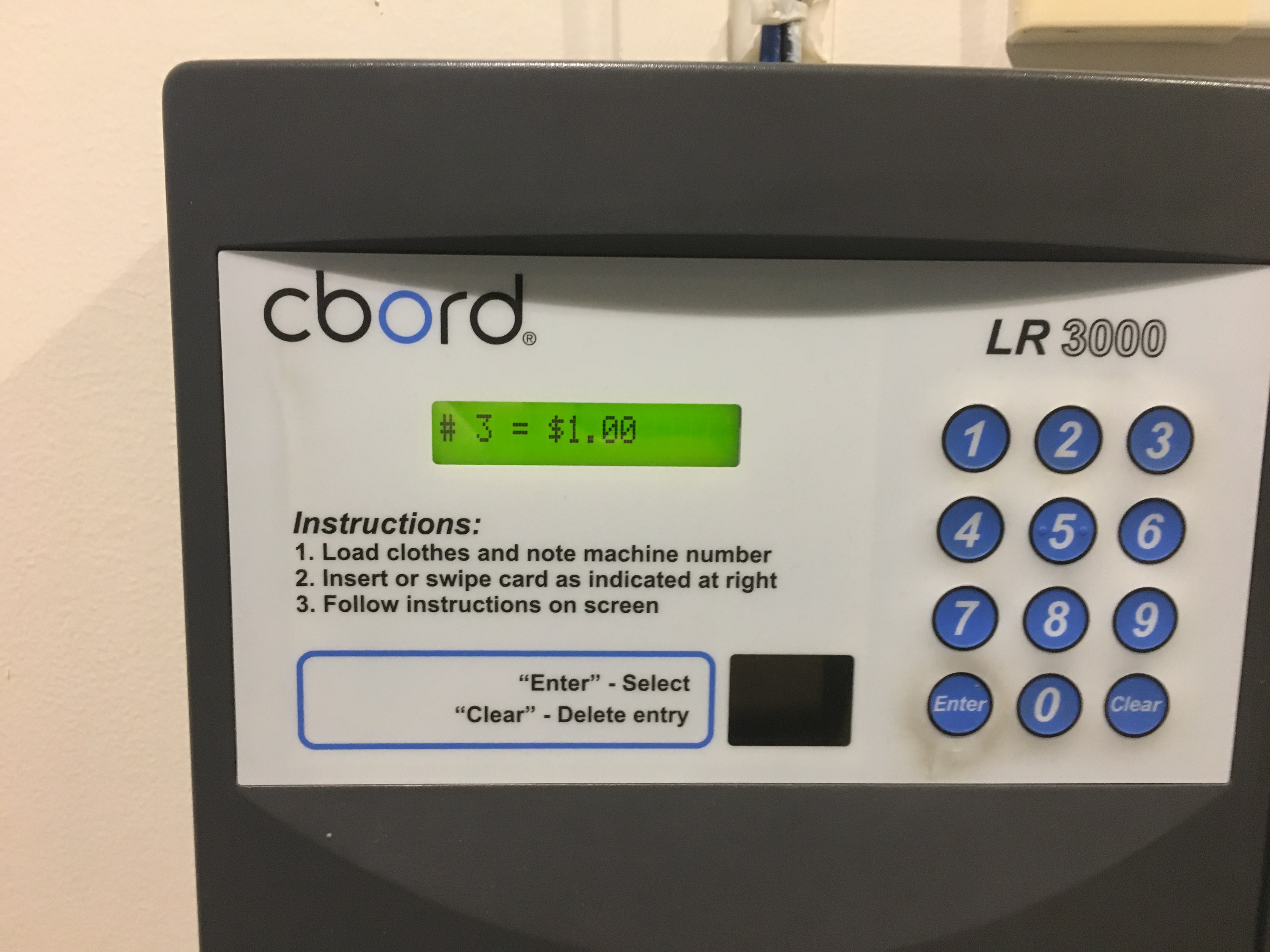



Like before, the price is displayed before continuing. If extra cycles were added, an additional 25¢ per cycle would be added.
The final confirmation screen is displayed, prompting the user to press 'Enter' to accept, or 'Cancel' to decline the purchase.
Accepting the purchase prompts the machine to indicate the accepted charge, and displays the remaining balance of the card to the user.
The dryer now beeps a few times to indicate the payment has been completed, and the cycle may now begin at the user's consent.
Benefits
No Loose Change
Ease of Use
Universality
Although each washing machine can be operated in a traditional sense with loose change, the ability to make all purchases with a single card avoids the annoyance of both carrying around, and finding loose change. However, this does mean that the account you are withdrawing from has enough funds to purchse a cycle.
The buttons on the front of the machine are well laid out, and minimalistically describe all the options available to the user. Temperature, cycle type, and soil level are grouped well, and easily distinguishable.
Not only do all machines in each dorm use the same technology, but every laundry room on campus use the same design, meaning if for some reason all your dirty laundry as in a dorm across the street, you could do a load just like you were at home! This also allows for users to not have to relearn the nuiances of each machine throughout the building if they would be different, but can instead rely on a distributed standard.
Close Proximity
Environmentally Friendly
Online Availability
The furthest laundry room from any room in Simmons is only three floors away, with the average room being within a floor of an accessible laundry room. Having in-house facilities is a major benefit to residents compared to having to transport laundry to a laundromat across campus.
All washing machines very clearly indicate that they are both high efficiency, and also encourage users to use high efficiency detergent when possible. There are several signs outlining this in most laundry rooms as well, so users can properly use the correct amount of detergent.
All machines are connected through the laundry view website. This website tracks the open washers, time remaining, and usage statistics of all laundry rooms across campus, allowing for users to most efficiently plan their laundry time.
Problems
Flow Sequence
Efficiency
Additional Cycles
The flow sequence is a bit clunky to say the least. As shown in the user-experience section above, there is quite a bit of unnecessary movement between the actual washing machine, and the payment machine.
While the machine is easy to use, it is certainly not the most efficient. The payment machine goes through instructions in series, meaning that one option must be selected before proceding to the next. This requires for users (especially experienced users) to spend an unnecessary amount of time clicking through prompts.
Additional cycles are a useful feature, but is most useful when your clothes are still more wet than desired near the end of the drying cycle. Additional cycles can be added at any point before or during a cycle, but after the cycle has completed, there is no option to add more time. Instead of the 25¢ charge for an additional cycle, you are instead stuck paying the original $1.00 price.
Two Displays
Time Customization
The separate displays (one for the machine, and one for the payment) causes a break in the flow process. Having to move from one to the other to complete the process is cumbersome, and to novel users, creates an unnecessary amount of movement throughout the laundry room for what would otherwise be a relatively stationary process.
There is often the case that the full 60 minute cycle is not needed. For example, some users expressed that in the case of more delicate items, they would prefer to put them in the dryer for only a few minutes, but leave most of the drying to be done by hanging the clothes.
Solutions
Two Displays
Efficiency
Additional Cycles
A major problem with the two separate displays is the distance between them not being as close as many users desire. This can be solved by either placing the second display very close to the machines, or by simply incorporating all technology into one display. Having payment directly on the washer or dryer would be a modern adaptation of the traditional coin payment methods, but the additional amount of retrofitting may make this solution less than optimal.
The software of the payment kiosk is relatively primative, and is similar to card scanners at grocery stores that often have long-winded dialogs. For the novice user, this is helpful to be guided through the process, but for the experienced user, takes an unbearable amount of time between steps. Implementing a touchscreen with all the options laid out at once can streamline this process, yet keep it just as understandable for all parties.
As the problem arises from the fact that once the dryer door is opened, the usage cycle is considered done, and the system resets for the next user, a simple delay in the software could be applied here. Inacting a short delay after the door is opened such that additional cycles can still be added is a simple, yet elegant fix. This delay would be on the order of 20-30 seconds, providing users just enough time to check if their clothes are dry or not, and to then initiate the additional cycles.
Flow Sequence
Time Customization
The flow process shown to the right is actually clearly described in all laundry rooms throughout Simmons, and supposedly in most other laundry rooms across campus. This sign carefully outlines exactly what the user should do to optimize their experience, but no one really reads these signs. A more intuitive fix would involve the rearrangement of the payment kiosk to be closer to the machines, such that users would not have to move back and forth from one side of the room to the other to reselect options and enter information.

Customizable time can be easily fixed by allowing for more options beyond the traditional settings in the payment kiosk. Effectively, allowing the user to, instead of entering the number of additional cycles, simply enter the number of minutes they wish to use the dryer for could tailor the service to each person a lot better. Alternatively, the full cycle could be purchased, but the user can indicate to the kiosk they are finished prematurely, and receive funds back proportional to the time remaining.

















